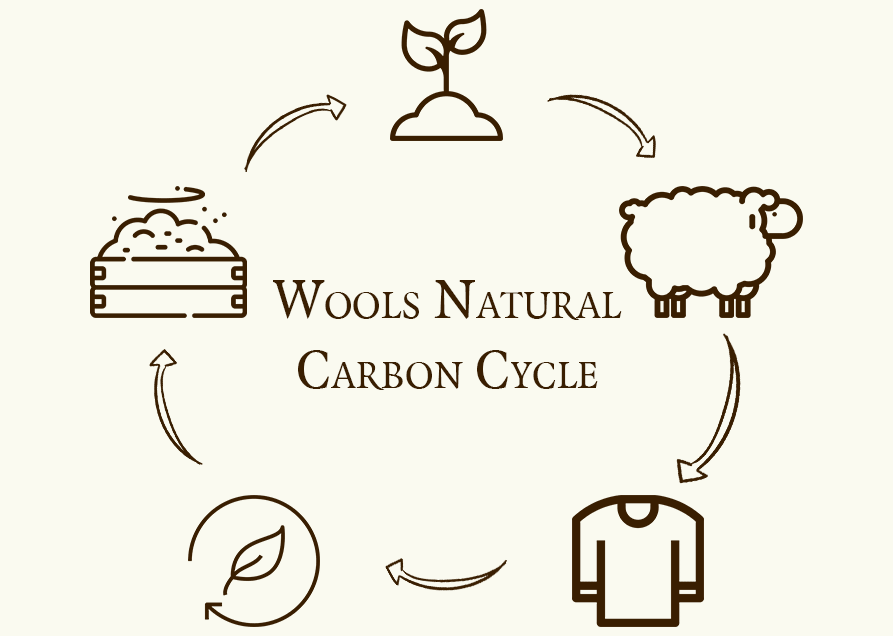
What Makes Wool Sustainable?
Wool is a fibre made of keratin that grows from the skin of animals such as sheep, llamas, goats, musk oxen and other similar animals. Wool is considered a sustainable resource as the fleeces grow back every year and produce no microplastics unlike synthetic clothing. Wool is also biodegradable meaning it can degrade naturally in soils and aquatic systems resulting in no microplastic pollution and no additional volumes in landfills.

Wools Natural Carbon Cycle
Woollen textiles and fibres are made up of carbon based products, but unlike many other textiles and fibres, wool is made from renewable atmospheric carbon, meaning when it is disposed of it acts like a fertiliser by releasing nutrients and carbon back into the soil.
Unlike wool, synthetic clothing fibres, such as polyester and acrylic, are refined from fossil fuels, which have been stored in the earth for millions of years.

The Wool Industry And Greenhouse Gasses
There are several ways the wool industry is working to manage and reduce greenhouse gasses. Significant research is underway to better understand and improve methane gas emissions. Research has already shown us that methane gases can be lowered and controlled by changing pasture species, improving soil management to increase carbon storage and by planting trees.


 STORES
STORES
 Euro
Euro
 US Dollar
US Dollar
 Pound Sterling
Pound Sterling
 Australian Dollar
Australian Dollar
 Canadian Dollar
Canadian Dollar
 Japanese Yen
Japanese Yen




